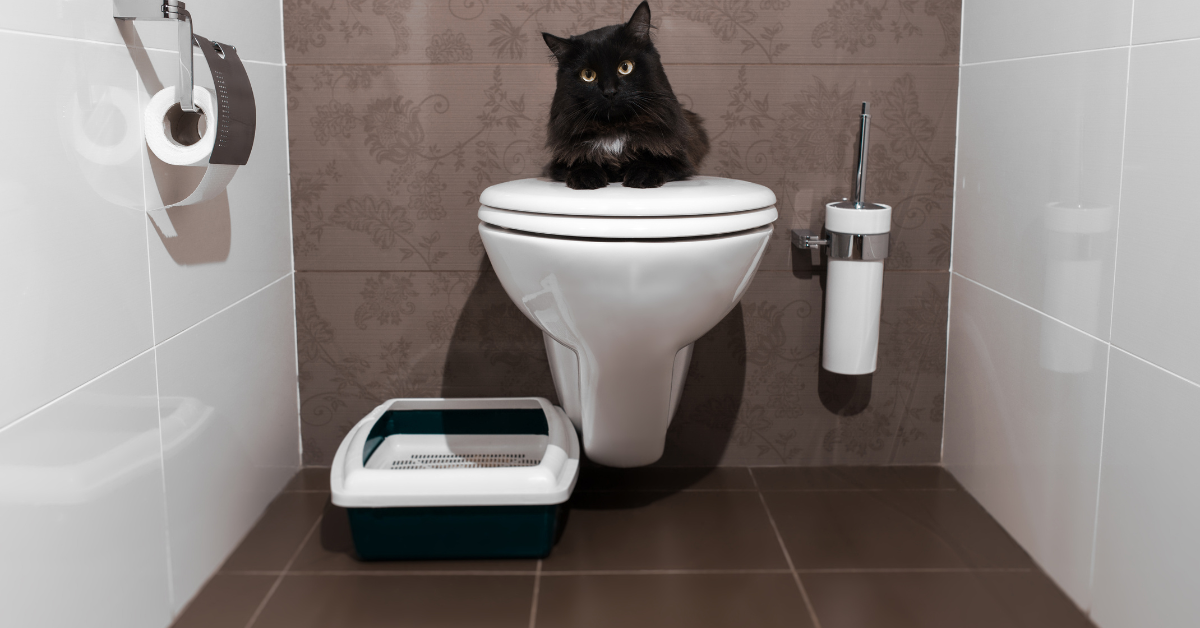Dangers of Disposing Cat Poop in Your Toilet - Precautionary Steps
Dangers of Disposing Cat Poop in Your Toilet - Precautionary Steps
Blog Article
They are making a number of great observations about How to Dispose of Cat Poop and Litter Without Plastic Bags as a whole in this great article on the next paragraphs.

Intro
As cat owners, it's necessary to be mindful of exactly how we take care of our feline buddies' waste. While it might seem convenient to purge feline poop down the toilet, this technique can have harmful repercussions for both the setting and human wellness.
Environmental Impact
Purging feline poop introduces harmful microorganisms and parasites into the water supply, posing a significant threat to aquatic communities. These contaminants can negatively influence marine life and concession water high quality.
Health Risks
In addition to environmental issues, flushing feline waste can likewise position health and wellness risks to human beings. Feline feces may consist of Toxoplasma gondii, a parasite that can create toxoplasmosis-- a potentially extreme disease, especially for expecting women and people with weakened immune systems.
Alternatives to Flushing
Luckily, there are more secure and much more liable means to get rid of feline poop. Consider the following options:
1. Scoop and Dispose in Trash
The most typical technique of throwing away feline poop is to scoop it into a naturally degradable bag and toss it in the trash. Make sure to utilize a dedicated clutter inside story and dispose of the waste without delay.
2. Use Biodegradable Litter
Select biodegradable pet cat clutter made from products such as corn or wheat. These litters are eco-friendly and can be safely gotten rid of in the trash.
3. Hide in the Yard
If you have a lawn, think about burying feline waste in an assigned area far from veggie yards and water sources. Make sure to dig deep adequate to stop contamination of groundwater.
4. Mount a Pet Waste Disposal System
Purchase a family pet waste disposal system particularly made for feline waste. These systems use enzymes to break down the waste, lowering odor and environmental influence.
Conclusion
Responsible pet dog possession prolongs beyond giving food and shelter-- it likewise involves appropriate waste administration. By avoiding purging pet cat poop down the commode and selecting different disposal methods, we can minimize our ecological footprint and secure human health.
Why You Should NEVER Flush Cat Poop (and/or Litter) Down Your Toilet
The Problem with Litter
The main function of litter is to solidify and adhere to your cat’s waste. While this makes litter excellent for collecting cat poop and urine, it’s also the exact property that makes it a nightmare when flushed down the toilet.
Cat litter can and will clog pipes. There is non-clumping litter, but it’s still quite heavy and can build up in pipes. This is true even of supposed “flushable litter.”
The problems only compound when the litter is already clumped into cat waste. Toilet paper is among the more flushable things, and even too much of that will clog a toilet.
The Problem with Cat Poop
Sewers and septic systems are designed with human waste in mind. The microbes that help break down human waste don’t work on cat waste. Additionally, cat poop plays host to the parasite Toxoplasma gondii.
When flushed, this parasite can enter the environment in places it was never meant to, posing a risk to pregnant women, their unborn children, and other people with compromised immune systems. While it might not seem possible, flushing cat poop can indeed introduce this parasite to the public water supply.
These reasons are why, even if you’ve trained your cat to go on the toilet and flush, which is possible, it’s still not a good idea. Also, pregnant women and the immunocompromised shouldn’t change litter, either.
How to Handle Litter
The best way to handle litter is to simply put it in a plastic bag and place it in the trash. Avoiding environmental risks and possible plumbing damage is worth the extra effort.
You can also invest in devices that seal away your cat’s waste in a separate compartment, so you don’t have to change the litter nearly as often. They’re also safer for pet owners because they limit the possibility of Toxoplasma gondii exposure.
Disposing of litter the old-fashioned way will ensure you won’t have to worry about any issues that flushing the waste can potentially cause.
Take Care of Clogged Pipes with Stephens Plumbing, Heating & Air Conditioning
The reasons you should never flush cat poop down your toilet are numerous, but sometimes the inevitable happens despite your best efforts.
Stephens Plumbing, Heating & Air Conditioning is ready to help if you’re experiencing litter-blocked plumbing. Whether you need us in an emergency or want to schedule regular maintenance, we’re here for you.
https://www.stephensplumbing.net/bathroom-plumbing/never-flush-cat-poop-down-your-toilet/

Do you like more info about How to Dispose of Cat Poop and Litter Without Plastic Bags? Place feedback further down. We would be interested to know your reactions about this content. In hopes that you come back again soon. Enjoyed our entry? Please share it. Let other people locate it. Thank-you for your time spent reading it.
Website Report this page